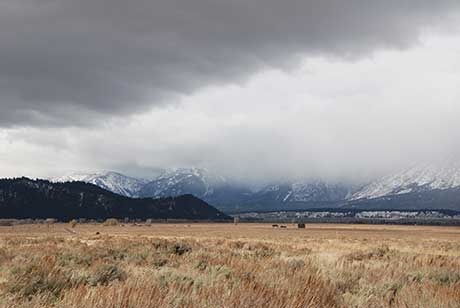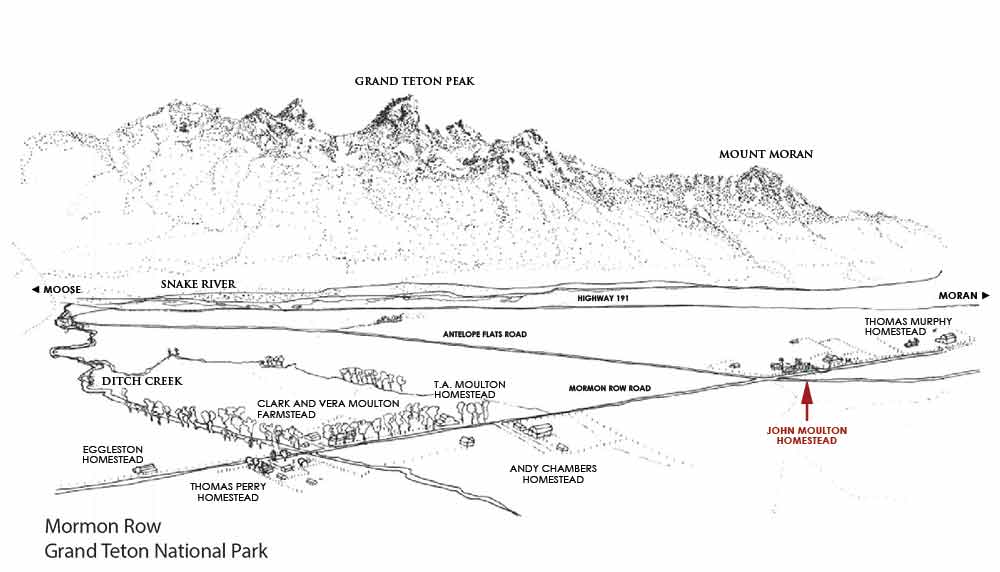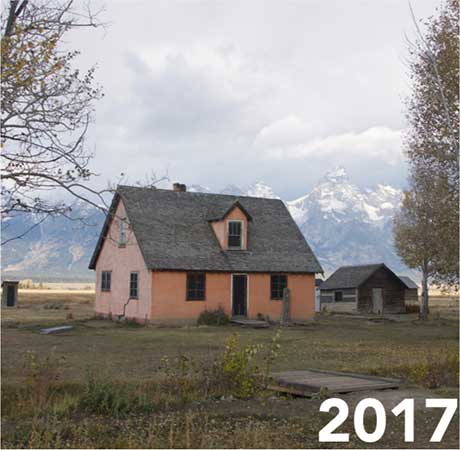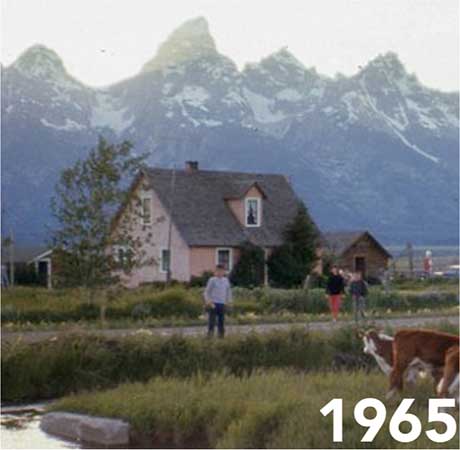|
The
Jackson Hole Valley, located in northwest Wyoming, was part of the late
period of frontier homesteading of the Western United States. Since its
settlement in the 1890s, the major industry in the area has been
tourism. While rich in natural beauty, the Teton area is resource poor
in terms of minerals and viable land for agriculture. By the beginning
of the twentieth century, Jackson Hole had a small population who
attempted to homestead and cultivate federal land grants. This was the
case of John Moulton, who migrated to the burgeoning Mormon Row
community just north of Jackson in 1908. John Moulton, along with his
brother Thomas Alma and other emigres from Idaho and Utah, claimed land
grants to the north of Blacktail Butte, which had a fortuitous
combination of deep, well-drained soils with access to seasonal streams
and shelter from the prevailing winds. The Mormon Row inhabitants were
the primary local agricultural resource and therefore critical to the
early Jackson Hole economy and they provided fresh dairy products for
the local community and dude ranches alike.
|
|
|
 |
| View of the historic district, looking
southwest.
The Mormon Row community was situated on the Jackson Hole valley floor
on the leeward side of Black Tail Butte (left). |
|
|
 |
|
Contextual perspective illustration of the
Mormon Row Historic District, which shows the extant structures on the
row.
(Image Source: Historic American Building Survey, WY-152-A). |
|
|
| After cultivating their
plots of land for some time,
homesteaders would replace their rustic log cabins initially built to
satisfy the Homesteading Act of 1862 with more finished and refined
structures given time and resources. A few of the J. Moultons’
neighbors upgraded their homes shortly after settling their plots; even
his brother built a frame structure in 1915. John, by contrast, waited
nearly thirty years to construct his second residence. After moderate
success from their farm and dairy in the 1920s and 1930s, the J.
Moultons had the resources to build a two-story frame house stuccoed
with cement in 1938. The house was one of two stuccoed structures on
Mormon Row, and the first structure on the row constructed by a
professional builder. |
|
|
|
|
| The
John Moulton homestead exterior is decorated with a pink painted cement
and the raised foundation has a decorative ‘water table’, in
which the stucco has been scored to represent stone and painted a
darker purple to distinguish it from the rest of the elevation. The
wooden window frames were originally painted a dark green, and the rest
of the wooden elements were painted white. The whimsical style of the
house may derive from traditions of domestic styling in the western
Mormon cultural sphere, which favored durable and highly processed
materials to connote expression of human power and refinement. Hearsay
among the NPS staff and Jackson community places intention with John
Moulton himself, who purportedly elected to paint the house pink
because it was his wife’s favorite color. In all, the new vibrant house
would have stood out dramatically on the valley floor amongst the log
cabins and nearby frame structures alike. |
|
 |







